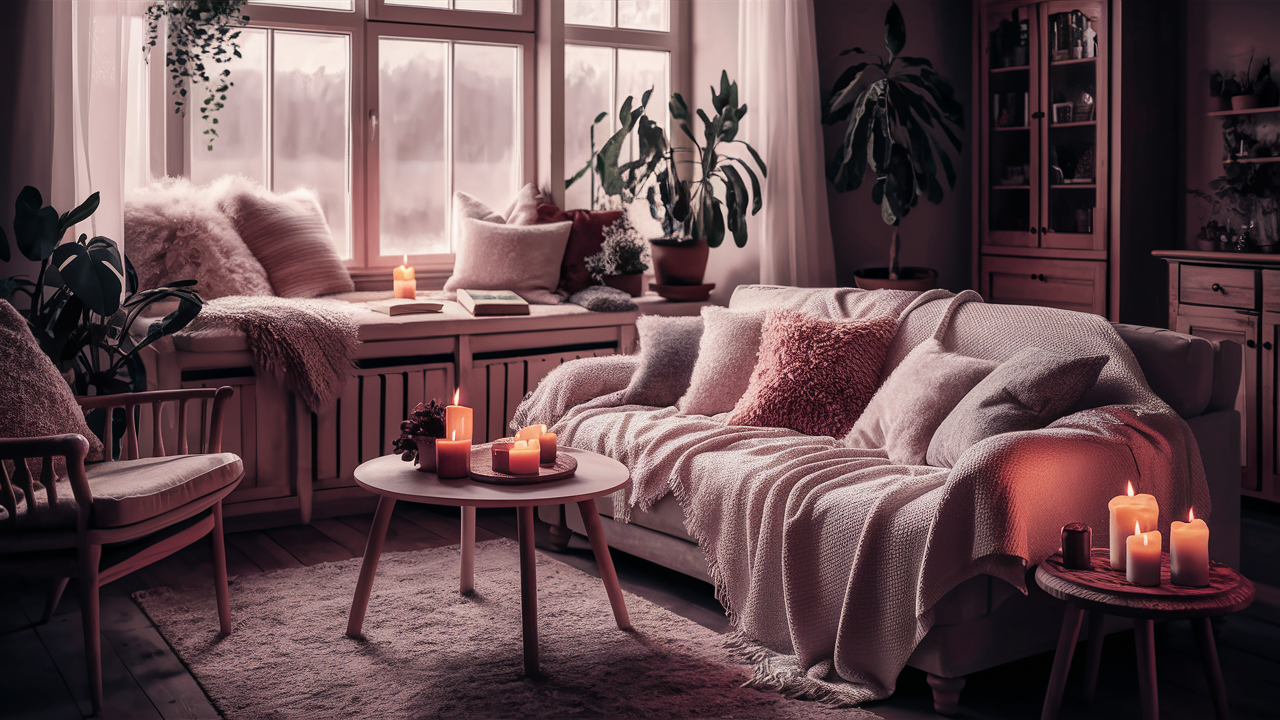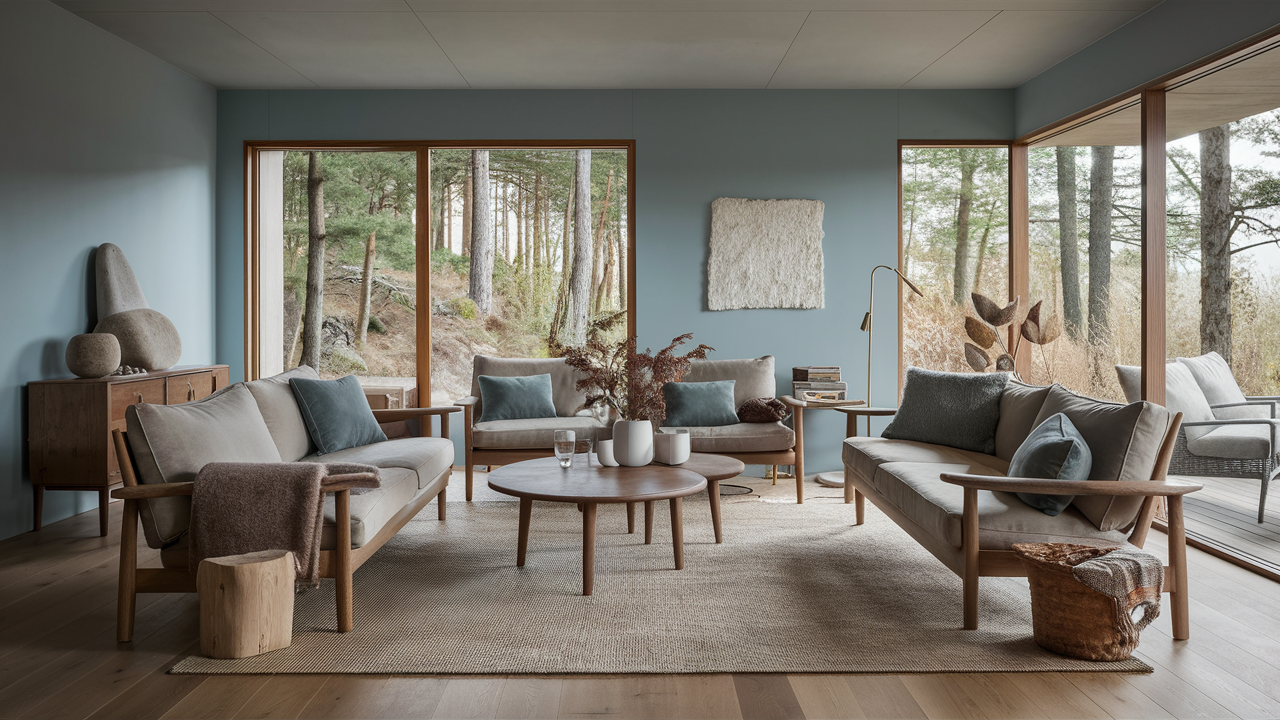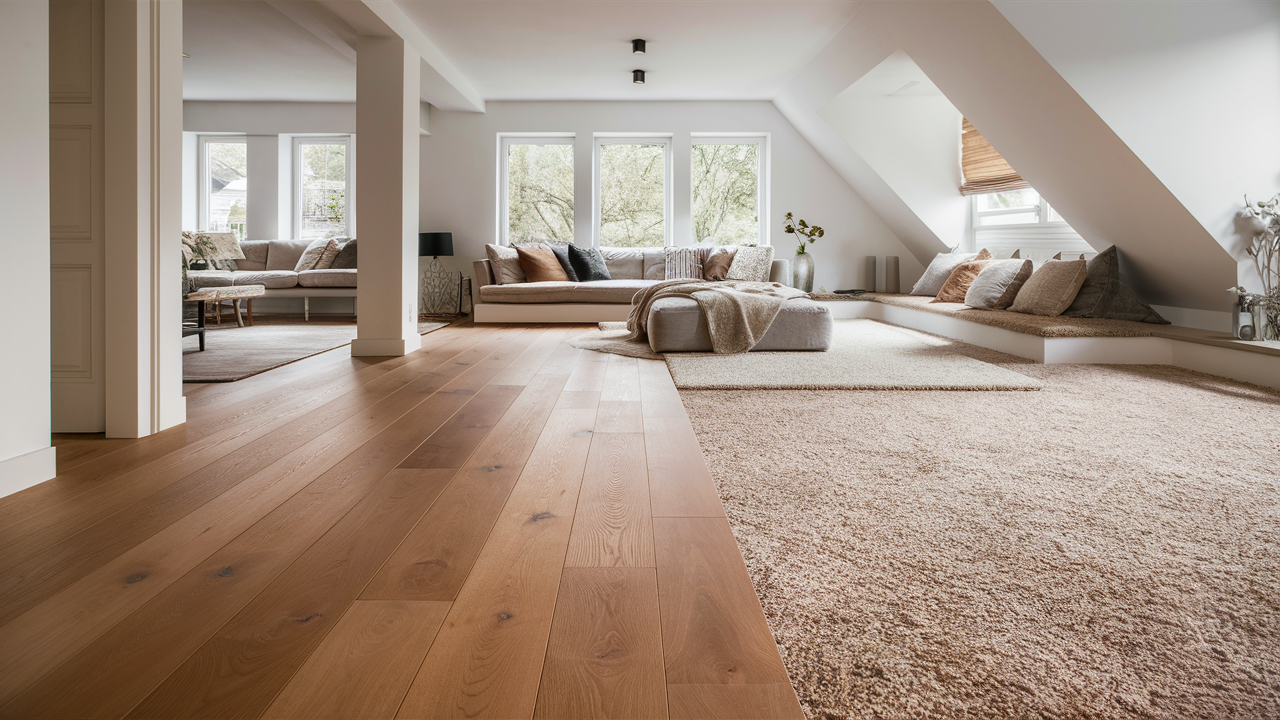Introduction
Green roofs are an innovative and sustainable solution that is becoming more prevalent in urban environments. By integrating vegetation with rooftops, green roofs provide a range of environmental benefits. These include reducing the amount of heat absorbed by buildings, which helps lower energy consumption and improve air quality. Additionally, green roofs can also create new green spaces in densely populated cities, making them essential for healthy urban planning. Many green roofs across the world contribute to the development of eco-friendly cities, offering both aesthetic and practical advantages.
The green roof industry is rapidly expanding as more cities and companies embrace this technology. From public to private projects, green roofs offer various advantages, such as reducing stormwater runoff and improving thermal insulation. With green roofs typically designed to complement urban infrastructure, they support biodiversity and even enhance the presence of green walls in cityscapes. As examples of green roof projects continue to grow, these systems are becoming vital to sustainable development efforts globally.
Key Takeaways
- Green roofs offer significant environmental benefits by reducing heat absorption, improving air quality, and lowering energy consumption.
- These systems help manage stormwater by absorbing rainwater, reducing runoff, and preventing urban flooding in cities.
- Intensive green roofs can support a variety of plants, while extensive roofs are lighter and require less maintenance.
- In Nordic regions, green roofs provide thermal insulation and energy conservation by preventing heat loss in winter and cooling buildings in summer.
- Green roofs create habitats for urban wildlife, fostering biodiversity in cities where natural spaces are limited.
- Installing green roofs requires careful planning, especially in terms of structural integrity, weight considerations, and ongoing maintenance.
Understanding Green Roofs

Green roofs are a smart and eco-friendly way to bring nature into cities. By placing plants on rooftops, green roofs for healthy cities offer a ton of benefits. They act as a cool roof, helping to lower the amount of heat that buildings absorb, which in turn cuts down on energy use. Not only do green roofs reduce heat, but they also clean the air and make spaces more beautiful. In many areas, roofs are typically designed to include greenery, making them key for city planning. Plus, green roof vary depending on the building and climate, but they always help create green spaces. As more cities use green roofs, the presence of a green roof makes neighborhoods healthier and more pleasant to live in. These green roofs are becoming popular, and their impact on urban areas keeps growing.
Key Contributions of Green Roofs to Sustainable Nordic Infrastructure
1. Thermal Insulation in Cold Climates
Green roofs provide excellent thermal insulation, which is especially important in Nordic regions with extreme cold. The vegetation and soil layers help retain heat during winter, reducing the need for additional energy consumption for heating. This natural insulation also lowers heating costs, making it a key component of green building strategies in the Nordic context.
2. Stormwater Management and Flood Prevention
One of the critical benefits of green roofs is their ability to manage stormwater. In Nordic regions, where rainfall can be substantial, green roofs absorb rainwater, reducing runoff and easing the burden on urban drainage systems. This helps prevent urban flooding, especially during intense rainstorms. Additionally, the filtration capabilities of these systems help maintain water quality by removing pollutants before the water reaches local waterways.
3. Biodiversity and Wildlife Support
Green roofs in Nordic cities can be designed to support local biodiversity. By incorporating native plant species, these rooftops create habitats for birds, insects, and other small wildlife that may otherwise struggle in urban environments. This boosts urban biodiversity, creating a balanced ecosystem within cities while supporting pollinators like bees, which are crucial for the health of urban gardens and natural environments.
4. Energy Conservation During Summer
During summer months, green roofs in the Nordic region provide cooling benefits by absorbing and reflecting less heat than traditional roofing materials. This reduces the urban heat island effect, where cities are significantly warmer than surrounding rural areas, and helps lower the demand for air conditioning. As a result, energy consumption during hot periods is reduced, contributing to more sustainable energy usage.
5. Aesthetic and Recreational Benefits
In addition to their environmental advantages, green roofs contribute to the aesthetics of urban spaces. They transform unused rooftops into vibrant green spaces, enhancing the visual appeal of cities. In some cases, intensive green roofs can even serve as recreational spaces for urban residents, offering gardens or small parks that improve the quality of life in densely populated areas.
6. Contribution to Sustainable Urban Planning
Green roofs play a significant role in sustainable urban planning, especially in cities that are looking to reduce their carbon footprint. They align with the goals of green infrastructure by promoting energy efficiency, improving air quality, and creating green spaces in otherwise dense urban environments. Nordic cities are increasingly adopting green roof technology to combat climate change, reduce emissions, and make their urban areas more resilient and livable.
What is a Green Roof?
A green roof, sometimes referred to as a living roof, involves covering a building’s roof with layers of vegetation, soil, and a waterproof membrane. This system acts as a natural insulator, reducing the need for heating and cooling. It also aids in managing stormwater runoff by absorbing rainwater, thus reducing the pressure on urban drainage systems. Green roofs offer an effective way to introduce more green space into urban environments, especially where traditional ground-level gardens may not be possible. Their design also helps mitigate the urban heat island effect, lowering temperatures in densely populated areas.
Types of Green Roofs: Intensive vs. Extensive
Green roofs are generally categorized into two types: intensive and extensive. Intensive green roofs are thicker and capable of supporting a variety of plants, even trees, making them ideal for creating roof gardens. However, they require more maintenance and structural support. Extensive green roofs, on the other hand, are shallower and lighter, with minimal maintenance needs. They typically feature drought-resistant plants and are often used in commercial buildings where lower maintenance is preferred. Both types of green roofs offer numerous environmental benefits, including temperature regulation, biodiversity support, and stormwater management.
Environmental Benefits of Green Roofs in Nordic Regions

Green roofs offer numerous environmental benefits, especially in Nordic regions where weather extremes are common. By adding layers of vegetation to rooftops, these systems help manage temperature fluctuations, improve air quality, and reduce the need for artificial energy use. The Nordic climate, characterized by cold winters and mild summers, benefits greatly from the thermal insulation provided by green roofs. Beyond temperature control, these roofs contribute to the local environment by absorbing rainwater, reducing runoff, and helping to prevent urban flooding. As cities in Nordic regions continue to grow, green roofs present a sustainable solution to combat environmental challenges, integrating nature with urban infrastructure.
Case Study: Green Roof Implementation in Copenhagen, Denmark
Copenhagen, Denmark, provides an excellent example of how green roofs contribute to sustainable infrastructure in Nordic regions. In 2010, the city passed legislation requiring green roofs on all new flat-roofed buildings over a certain size. This initiative aimed to address issues related to stormwater management and urban heat island effects while promoting energy efficiency.
Since the implementation, the city has seen significant benefits. Green roofs have reduced the strain on Copenhagen’s drainage systems during heavy rainfall by absorbing large amounts of water, which helps prevent flooding. Additionally, these roofs have improved the thermal insulation of buildings, reducing the need for heating in winter and cooling in summer, thus lowering energy consumption. The green roof initiative has also enhanced biodiversity, creating habitats for birds and insects in urban spaces, and contributing to Copenhagen’s goal of becoming carbon-neutral by 2025.
Thermal Insulation and Energy Conservation
One of the primary benefits of green roofs in Nordic regions is their ability to provide thermal insulation. During the colder months, green roofs act as a natural barrier, preventing heat from escaping the building, thus reducing the need for additional heating. This leads to a significant reduction in energy consumption and costs. In warmer seasons, the vegetation on the roofs helps to cool the building by absorbing heat, minimizing the use of air conditioning. By creating a more energy-efficient environment, green roofs can reduce overall energy demands, making them a vital component in sustainable urban planning.
Stormwater Management and Runoff Reduction
Green roofs play a crucial role in managing stormwater, particularly in regions that experience heavy rainfall. By absorbing large amounts of rainwater, these roofs reduce runoff, preventing the risk of flooding in urban areas. This is especially important for cities where drainage systems can become overwhelmed during heavy rains. The vegetation and soil layers on green roofs filter and store rainwater, reducing the pressure on public drainage systems. Moreover, green roofs contribute to water quality improvement by filtering out pollutants, which helps maintain cleaner water in local waterways, further proving their environmental benefits for urban development.
Ecological Advantages of Green Roofs

Green roofs offer numerous ecological benefits, particularly in urban environments where natural spaces are scarce. By transforming unused roof space into vegetated landscapes, these roofs help reintroduce greenery into cities. This not only improves air quality and reduces the urban heat island effect but also plays a critical role in enhancing biodiversity. Green roof systems create mini-ecosystems that can support various forms of life, from plants to insects and small animals. In this way, green roofs contribute to both environmental sustainability and ecological health, making them an essential component of urban green infrastructure.
Case Study: Green Roofs Enhancing Biodiversity in Malmö, Sweden
Malmö, Sweden, has become a model city for integrating green roofs to support urban biodiversity. The Augustenborg Botanical Roof Garden, one of Europe’s largest green roof installations, covers over 9,500 square meters. The project was designed not only to manage stormwater but also to create habitats for urban wildlife, improving the city’s ecological health.
This green roof features a variety of native plants that attract pollinators like bees and butterflies, promoting biodiversity. By incorporating local flora, the roof supports species that thrive in Malmö’s climate, reducing maintenance needs while boosting ecological resilience. The green roof has also become a vital space for birds, insects, and small mammals in an otherwise urban landscape. The project showcases how urban areas can reintroduce natural ecosystems by transforming unused roof space, significantly contributing to the city’s overall sustainability and green infrastructure goals.
Habitat Creation for Urban Wildlife
Green roofs provide essential habitats for a variety of urban wildlife. Birds, insects, and small mammals often struggle to find natural habitats in densely built-up areas, but green roofs offer safe spaces for nesting, feeding, and shelter. These vegetated roofs serve as urban oases, supporting biodiversity even in the most concrete-heavy cities. The integration of plant life on rooftops encourages a balance between urban development and wildlife conservation. By creating pockets of greenery within cities, green roofs contribute to a healthier, more balanced urban ecosystem, ensuring that wildlife can coexist harmoniously with humans.
Biodiversity Enhancement through Native Planting
Another key advantage of green roofs is their ability to enhance biodiversity through the use of native plant species. Native plants are well-suited to local climates, requiring less maintenance and water than non-native species. This reduces the environmental impact while supporting local pollinators like bees and butterflies. By planting native flora, green roofs promote ecological resilience and help maintain natural ecosystem functions. Native vegetation also encourages the return of native wildlife, further strengthening the biodiversity of urban environments. These benefits make green roofs a sustainable, eco-friendly choice for cities aiming to foster biodiversity while reducing maintenance costs.
Challenges and Considerations for Green Roof Installation

Installing a green roof presents several challenges and considerations that must be addressed to ensure long-term success. While the environmental benefits are substantial, careful planning and attention to detail are essential in the design and implementation stages. Factors such as structural integrity, ongoing maintenance, and proper soil selection all play crucial roles in the overall performance of a green roof. Without addressing these aspects, a green roof may not function efficiently and could even damage the building. Understanding the complexities of green roof systems helps to ensure they are both sustainable and functional over time.
Structural Requirements and Weight Considerations
Before installing a green roof, evaluating the building’s structural capacity is vital. Green roofs, especially intensive roofs, add significant weight due to the layers of soil, vegetation, and water retention. A standard roof may need reinforcement to handle the extra load, especially during periods of heavy rainfall when water absorption can increase the roof’s weight. Engineers and architects must work together to ensure that the roof surface can support this added weight without compromising the building’s integrity. Additionally, the type of green roof—extensive or intensive—can influence these structural requirements, making early planning essential for safe and effective installation.
Maintenance Needs and Soil Management
Maintaining a green roof requires regular upkeep to ensure the vegetation remains healthy and the roof functions as intended. This includes routine inspections, watering, weeding, and sometimes the replacement of plants that may not thrive. Additionally, proper soil management is essential to support plant life and ensure efficient drainage. The soil used must provide sufficient nutrients while allowing excess water to drain away, preventing waterlogging or damage to the roof membrane. Careful selection of the soil mix and regular soil checks are necessary to maintain a balanced, sustainable ecosystem on the roof, ensuring it continues to offer benefits like cooling and stormwater management.
“Look deep into nature, and then you will understand everything better.” – Albert Einstein
Conclusion
Green roofs have proven to be an innovative solution for urban sustainability, offering numerous benefits to both the environment and city infrastructure. From enhancing air quality and reducing energy consumption to providing vital green spaces, green roofs can help cities address challenges like heat absorption and stormwater management. They are becoming essential features in modern green roof design, contributing to healthy cities by creating habitats for wildlife and improving the urban landscape.
As more cities recognize the benefits of a green roof, the installation of green roofs continues to grow. These systems, whether intensive or extensive, require careful planning regarding structural integrity and maintenance needs. However, the long-term effects of green roofs far outweigh the initial challenges, helping reduce the overall carbon footprint of urban areas. With the right green roof design team and support, green roofs can provide sustainable solutions that contribute to the development of eco-friendly and resilient cities globally.

![CLOUDY BAY [6 Pack] 6inch Smart WiFi LED Recessed Lights,RGBCW Color Changing Recessed Lighting,Compatible with Alexa and Google Home Assistant,No Hub Required,15W 2700K-6500K,CRI90+ Wet Location](https://m.media-amazon.com/images/I/41H5465vC2L.jpg)




